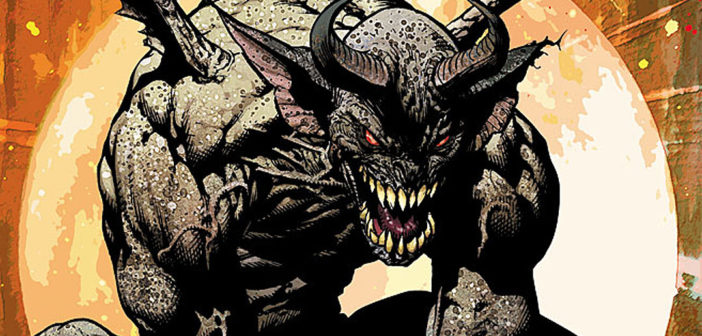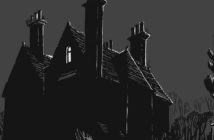Scott Lobdell and Eric Battle’s The Scourge appears to draw heavy inspiration from the pages of Top Cow’s better known books, like Witchblade and The Darkness. In The Scourge, we have rugged cops, beaten cityscapes, and devilish monsters born by supernatural means. But unlike Top Cow, the creatures here are not heroes; at least I don’t think they are. Rather, they are feral villains—added emphasis on “feral.”
The first issue opens with John Griffin of the NYPD silhouetted against a grand full moon; it’s a beautiful shot when admiring the silver hues of the moon and the purple-blue sky it’s framed against. Griffin, of course, is ripped with muscles, weather by life, and very handsome. He’s trying to survive a divorce from his bombshell of a wife, all in an effort to maintain his relationship with a young son that adores him.
Griffin embarks on a mountain-climbing getaway with his best friend, the dentist Peter Newburgh, in order to clear his head so he can properly refocus on his life. These opening shots of Griffin and Newburgh call up powerful echoes from the past: they’re infused with inspiration from Marc Silvestri and the late (great) Michael Turner; there’s also some David Finch here and there, but to a lesser extent. A great deal of attention is paid to the characters and environments: excuse my lack of theoretical knowledge behind the finer aspects of comic-book art, but the characters of Griffin and Newburgh are heavily detailed, bordering on a hyper-realistic level. This isn’t negative criticism—artist Battle’s knack for every detail is a laudable trait.
These vivid images pull us into the book, which takes a turn towards the supernatural when Newburgh stumbles into a fissure that houses glowing flora. As he and Griffin journey home to New York, Newburgh becomes deathly ill. He’s rushed to the emergency room where even more supernatural events take place, shaking what Griffin always assumed to be a normal, albeit corrupt and violent, world.
The Scourge doesn’t break any new ground with its story or artistic approach, but it’s faithful to the dark heroism that’s come before it. Writer Lobdell is a little predictable, but he’s consistent and takes the time to give his characters dimension—another laudable trait in this book. Colorist Curiel’s work is beautiful, especially the night scenes; at times they glow with a beautiful bioluminescence. He’s the perfect partner to Battle’s artwork. I enjoyed The Scourge, and I’m curious to see what will happen in the second issue. That’s my test for success, and this book passes.
This comic book review originally appeared on Broken Frontier.




